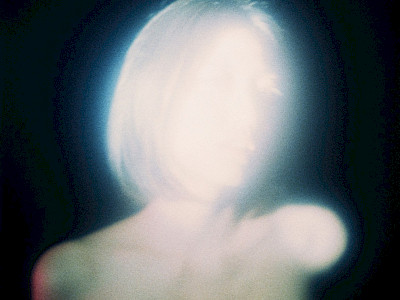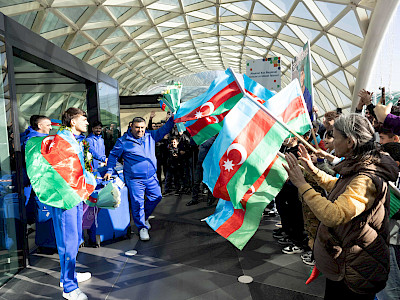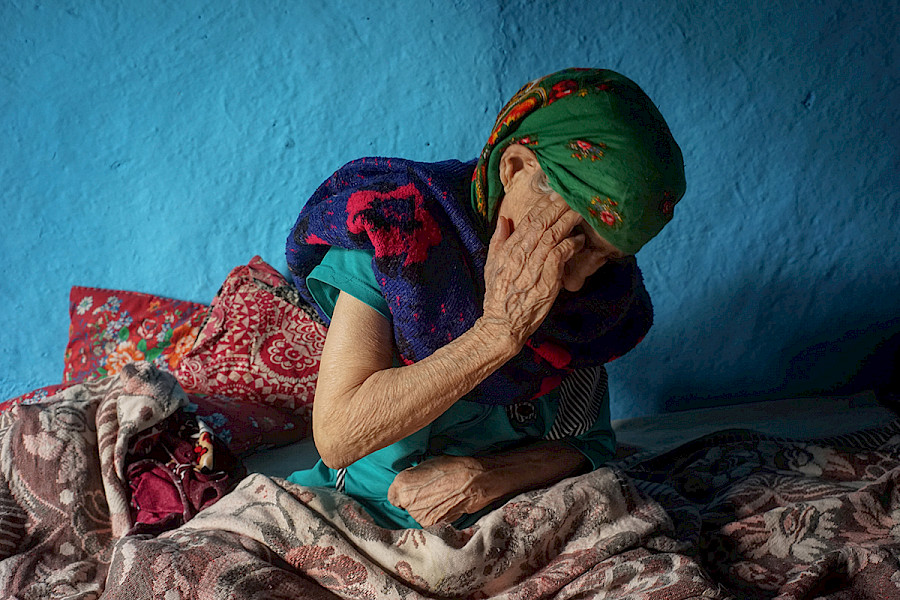
The ethnographic palette of the Azerbaijan Republic is multilayered at the expense of its historical coats. It is an object of both scientific and artistic research. The photo from the middle of before last century connects the present and the past, embodying world scientific and artistic discoveries of the last two centuries. The group of photographers under the supervision of Rustam Huseynov sent the message to future generations regardless of their geographical and political orientation in the world of global network. For future generations these shots will become the key to the past reflecting the regional collision of globalism with authenticity.
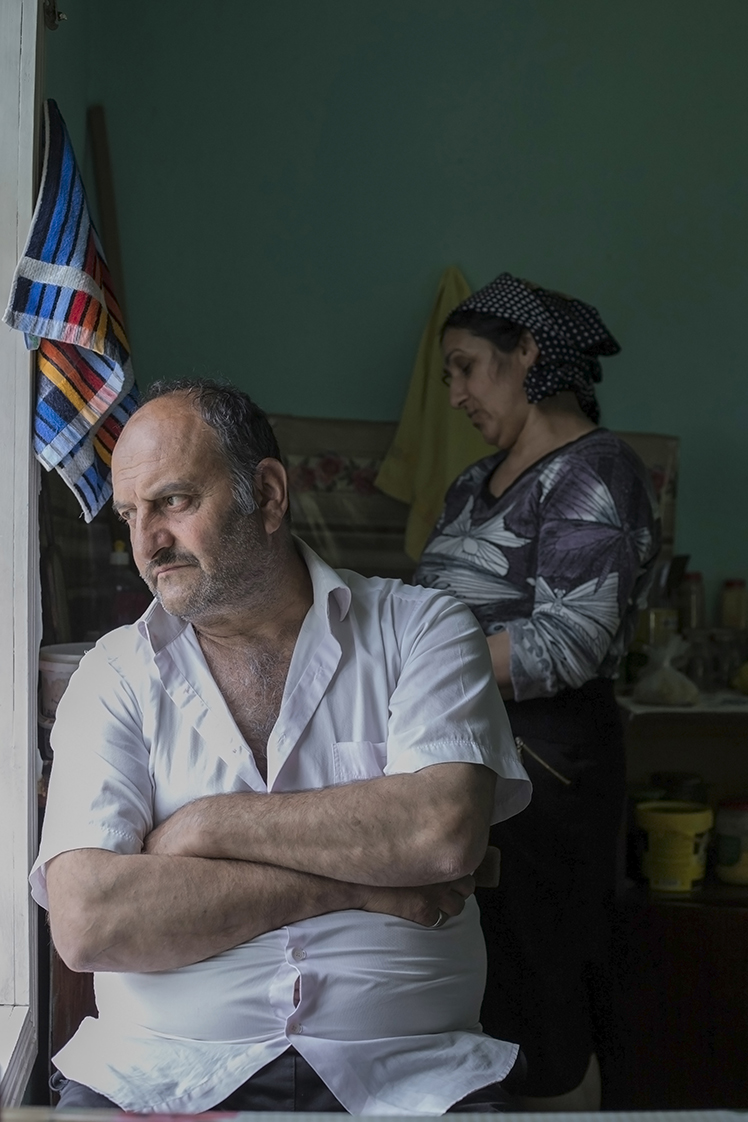
While climbing to the mountain village Sim of Astara district you feel inside the parallel process of immersion into the folklore life of Talish Mountains zone. From the point where the asphalt runs out, the twilight of the outgoing folklore starts with the magnificent, almost primal nature on the background. The internal wave uplifts you on tops of mountains – to the most southern village on a forest slope of the ridge almost on border with Iran. The Embassy of the Kingdom of the Netherlands supported the idea and realization of the project. Ambassador Extraordinary and Plenipotentiary of the Kingdom of the Netherlands in Azerbaijan Onno Kervers personally participated in photo expedition without hesitation. A seasoned wanderer, he captured the soulful connection of times. As if the time machine takes me to the period of young grandmothers and grandfathers, to the world of their youth where nobody rushes anywhere and the modern advantages like cellphones seem like a fantasy from a very distant future. Nevertheless authentic life keeps in itself all characteristic attributes of folk: a carpet, a wooden cradle for the baby, hot oven…
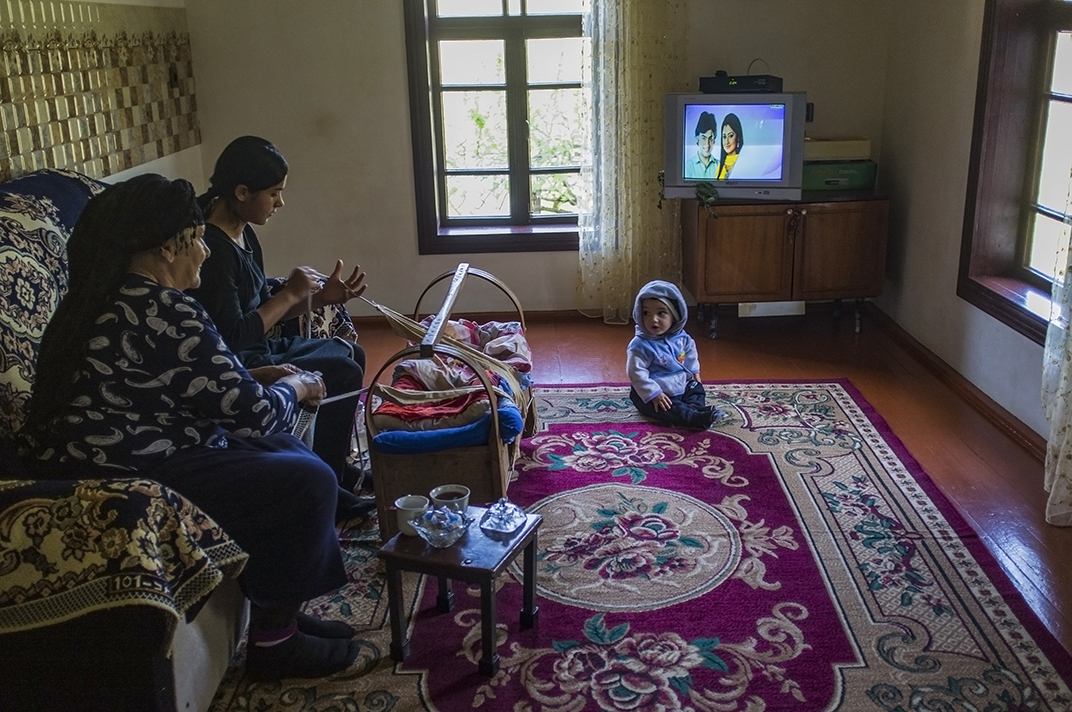
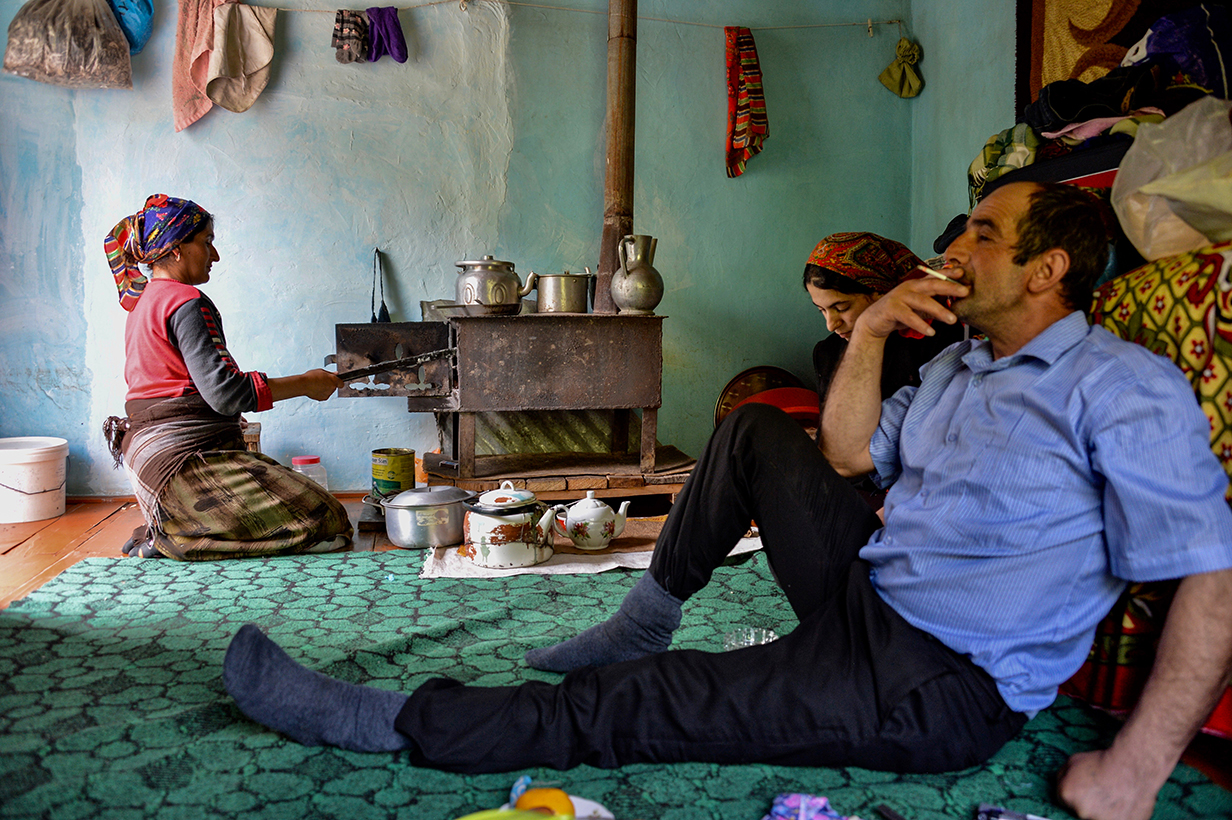
Onno captured two pictures showing fragments from rural school's repair routine: perfect white walls of literature classroom with hanging portraits of two beacons with tragic fate, columnists of the satirical magazine "Molla Nasreddin" and the leader poet of the Soviet Azerbaijan.
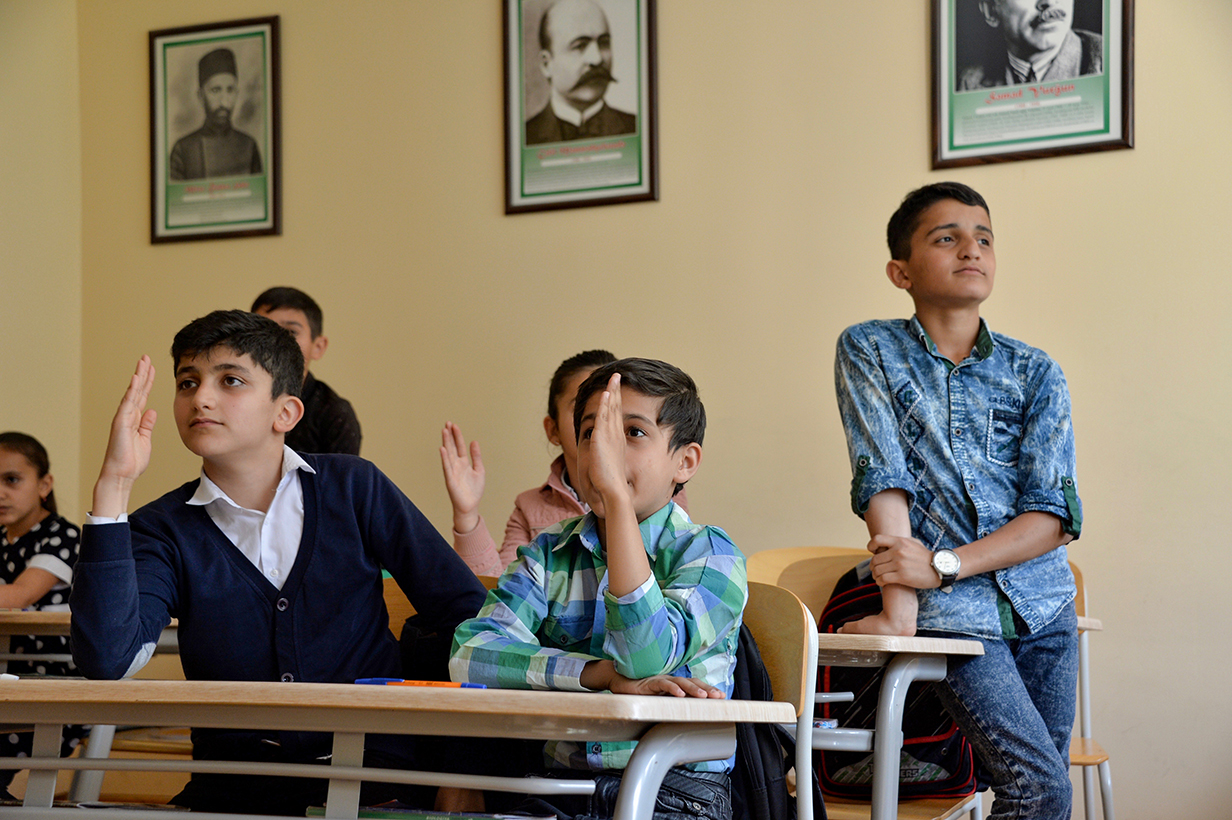
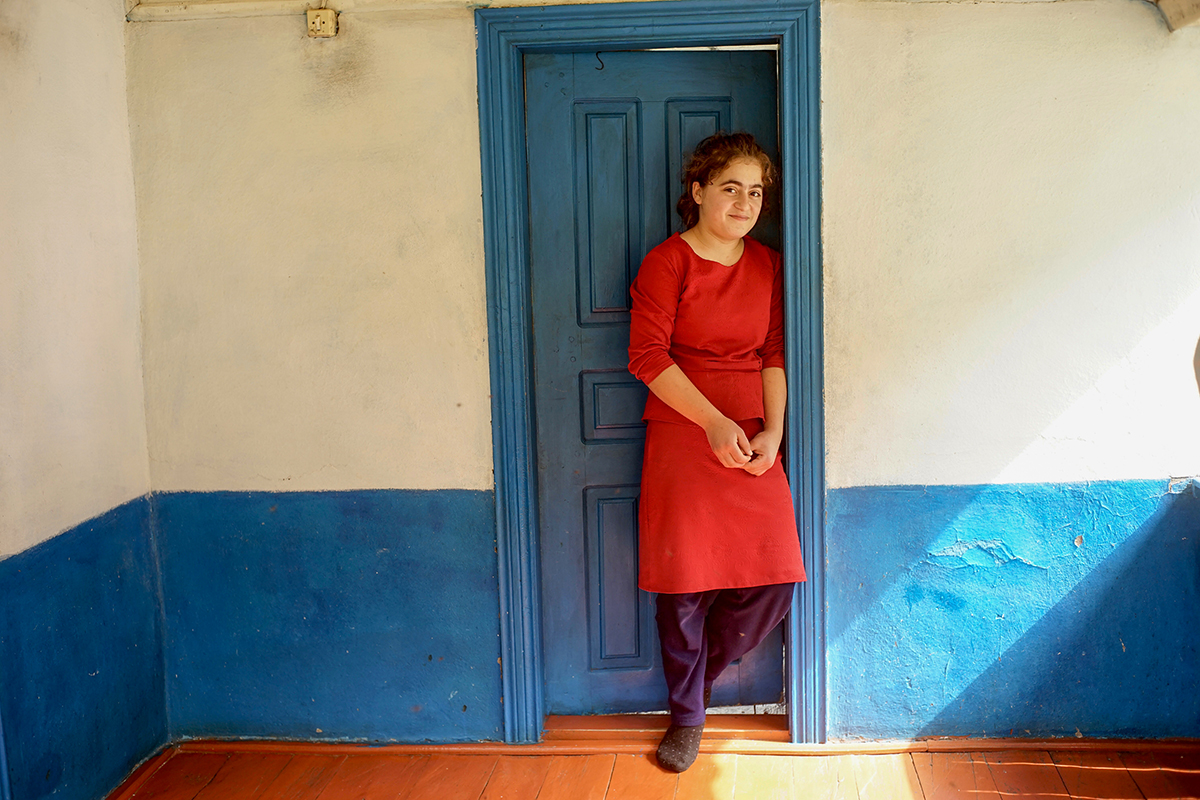
The most eminent and professional participant was the Dutch photographer Arian Zvarte. If you search this name in worldwide web, the first links to come out will be his landmark album about the Romani Kurds (Bosha). In order to capture these touching shots, he lived with a camp in special reservations. All his portraits are united by photographer's signature style: each type's emotion and personality can be guessed even if the hero of a shot tries to hide his face like, for example, the local resident of the Sim village. Near the blue wall in a multi-colored green-red-violet scarf-kelaghai, sitting on a floor among patterned mattresses, this woman tries to avoid the camera. Perhaps, she is in the middle of prayerful meditation. Her wrinkled palm with swelled veins covered her face, but it still as good speaks about her past. A wall is like a background speaking for itself, on which the history of an individual generation is reflected.
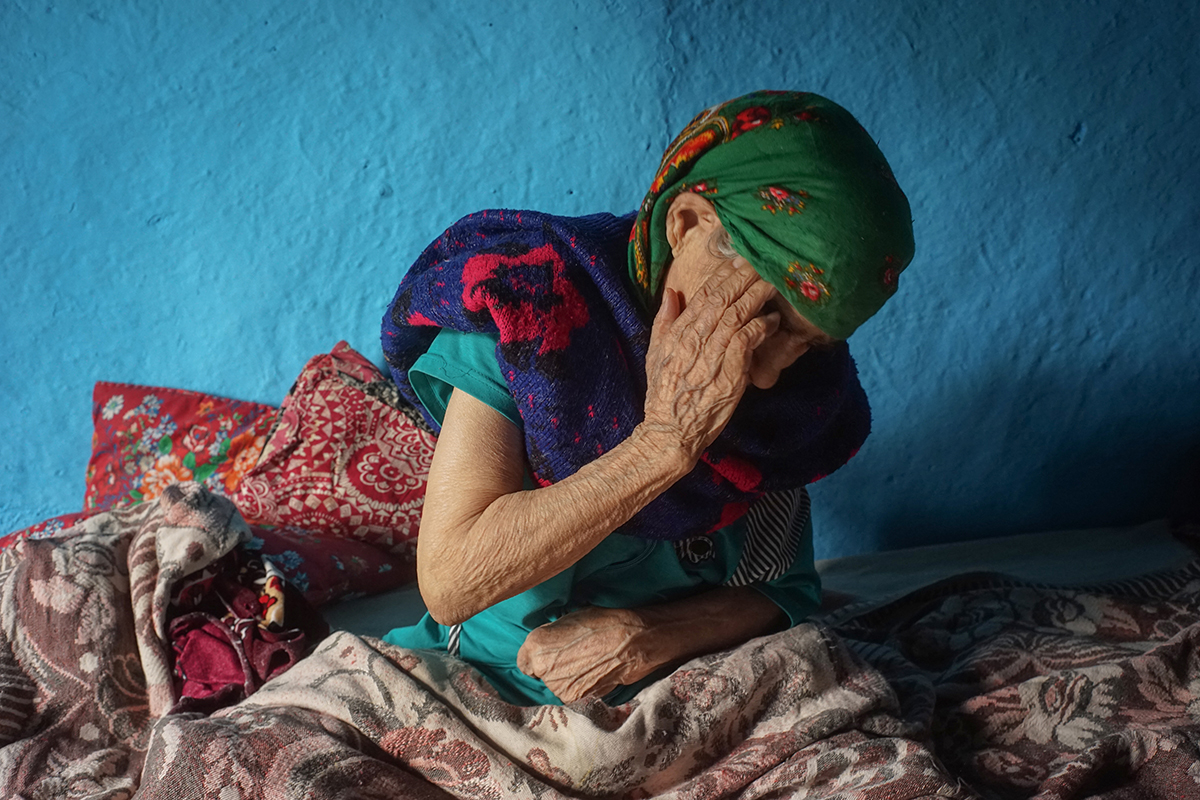
Questions of life of the universe led Ariane to the ancient tombstones going down to the earth, which clearly demonstrate that everything in this world is vanity and temporary, even stone cultural monument.
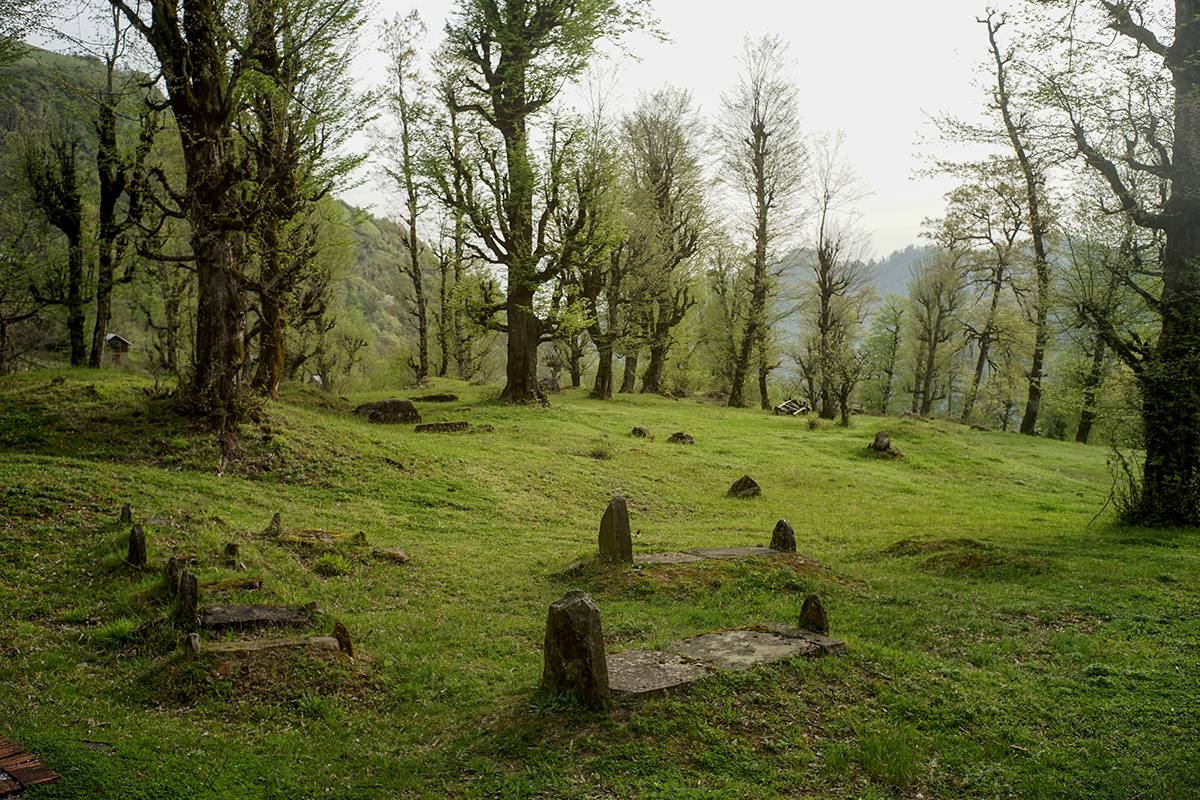
The technical parameter of the press for exhibition material of photoshoots is spotless. Tough selection of a photographic material took place almost every day from the very first day till the start of the final catalog printing. Thanks to painstaking work of the curator Rustam Huseynov there is no single passage shot, but here were collected the artifacts from tangible and intangible heritage of villagers. Here is the shot with remains of the Soviet auto relic "Volga" of GAZ-24 which was once serving as a taxi operator in the cities of the USSR and serving administrative party nomenclature for which it was called "chlenovoz"… The scrap metal on wheels modified into in the pickup for metal transportation shows up in front of the audience. The rusty discoloured body looks like a walking cubed metalworker.
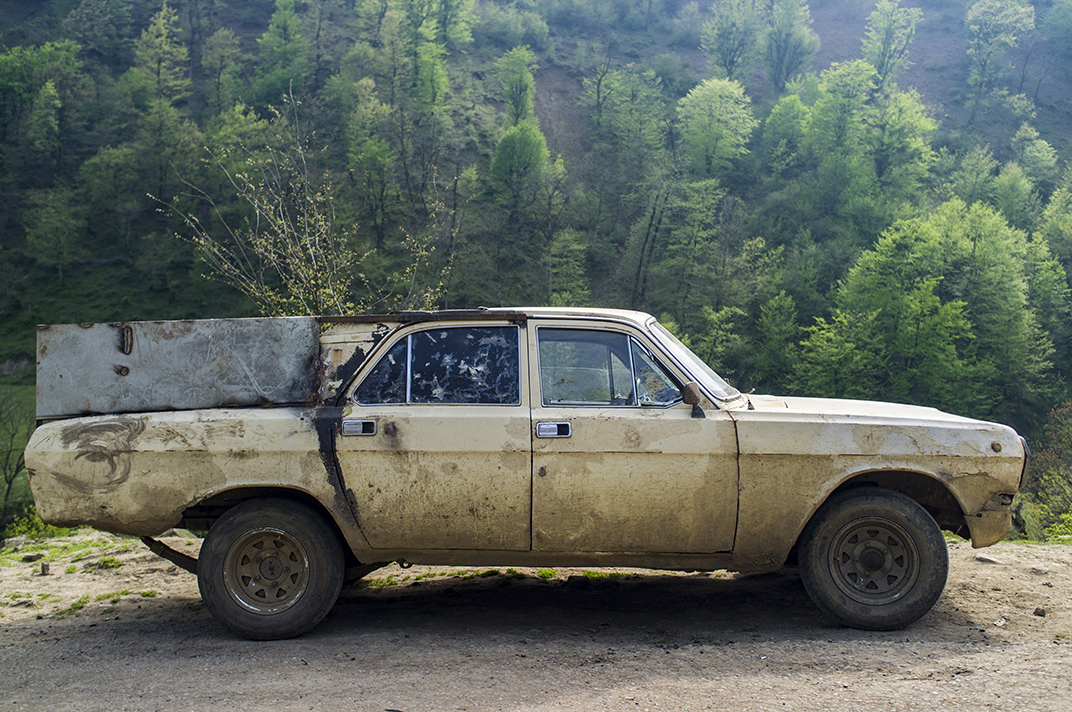
Among the villager types the portrait of gray-haired whether rural teacher or the school principal surrounded by pupils catches the eye. The hero looks very much like the character of classic satirist Mirza Jalil, especially near a photo of the sheep, peacefully grazing on a green lawn.
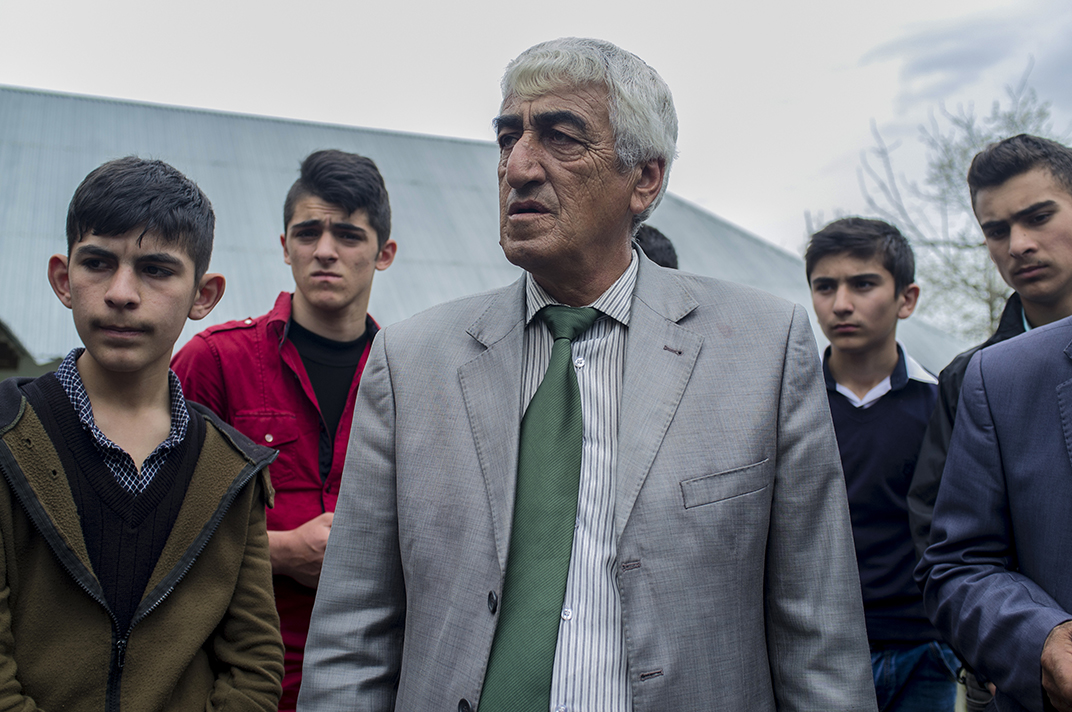
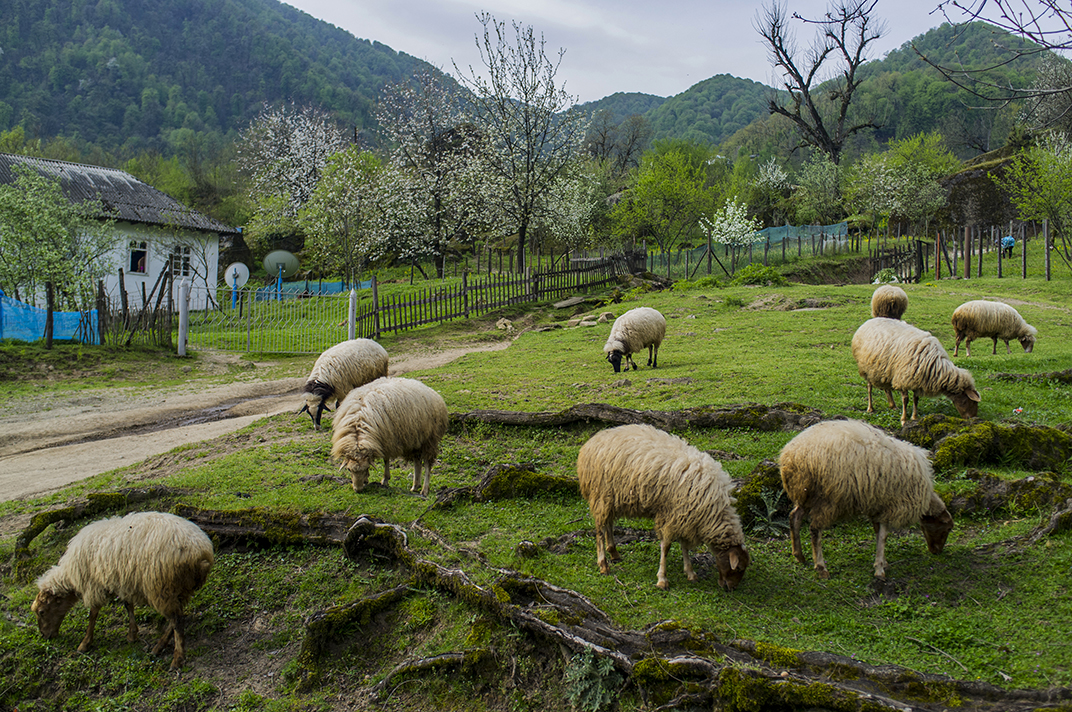
All the photoshoots are like separate fragments of a movie, stuck in the mode of a conditional freeze frame, united by accurately graduated light and color.
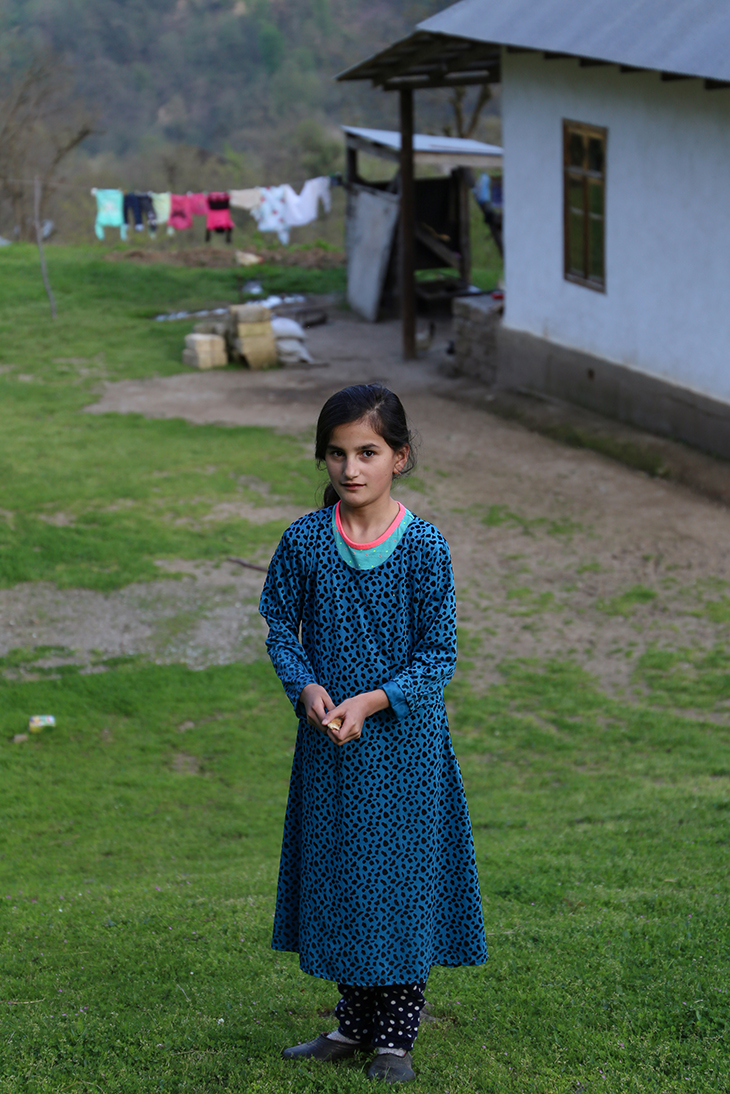
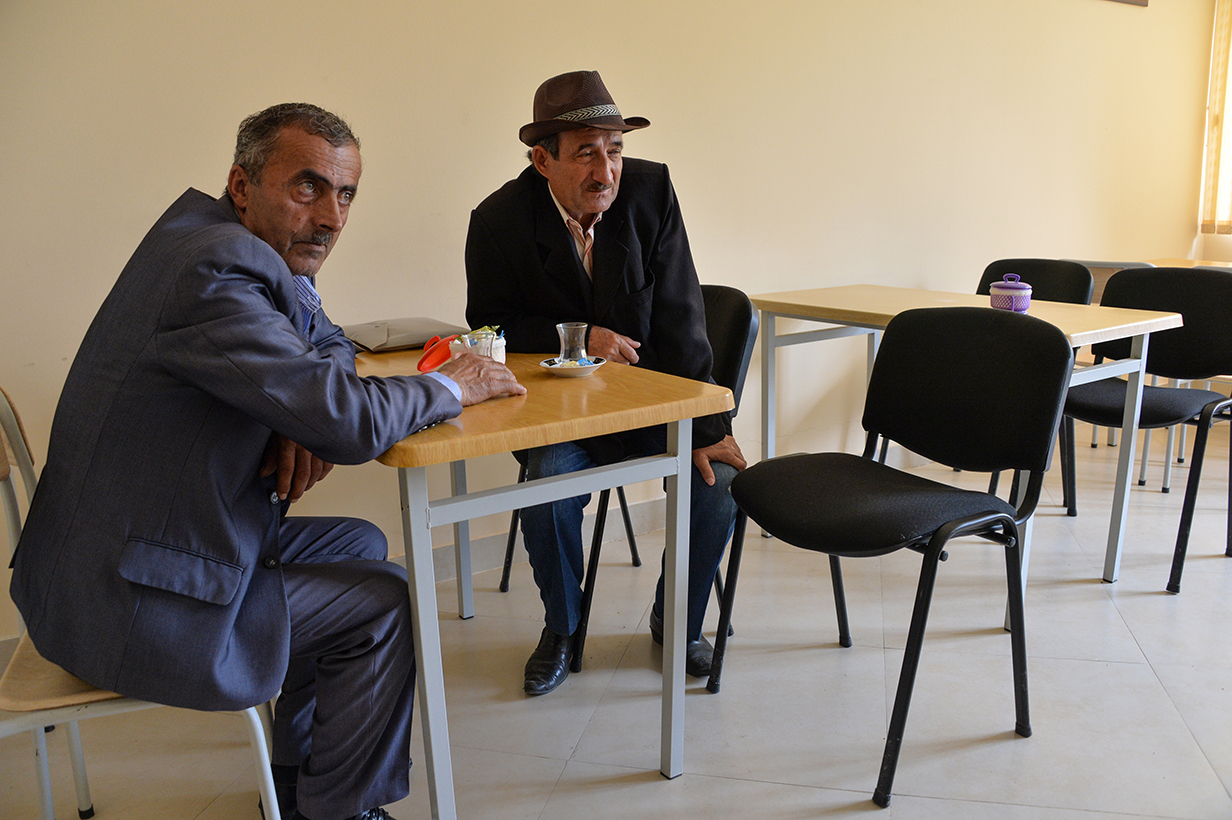
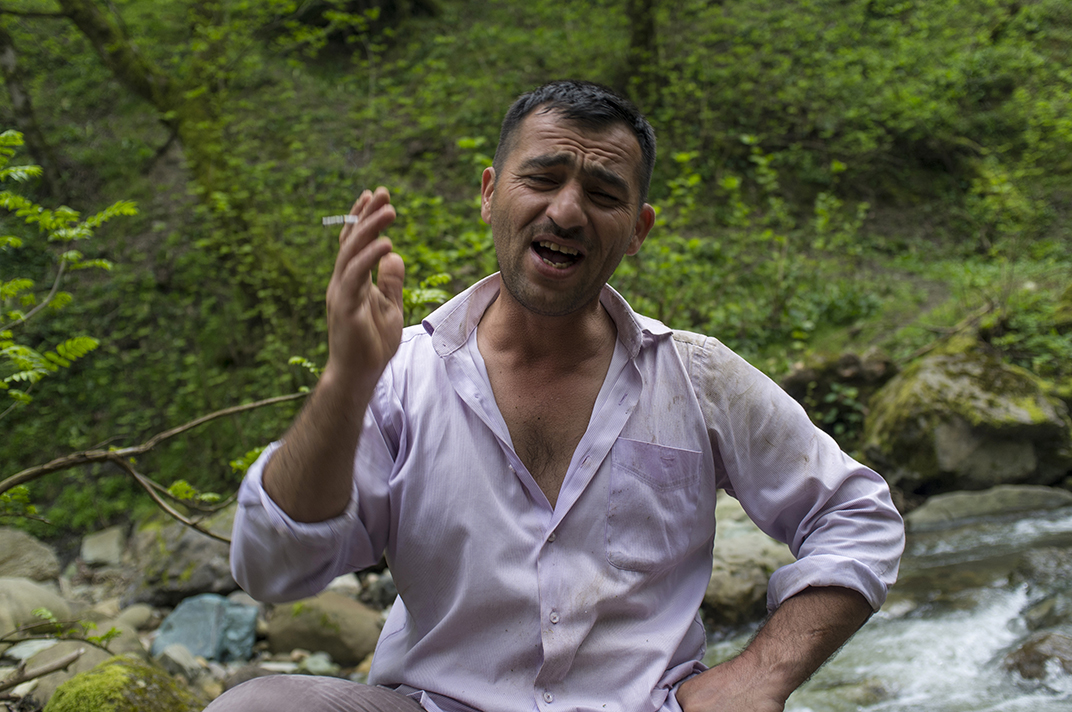
There is a lot to be glad with all the heart for the young figures of the Azerbaijani photoart who did not get lost among skilled masters and their Italian colleague. Remember these names: Ramina Bocharova, Vagif Mugalli, Arif Guluzade, Giordano Sotiriou (Italy).

P.S. In this project the author of these lines acted as "The guy with the video camera", observing working process of the photoexpedition and at the same time rural life of an authentic corner of Azerbaijan. My visual sketch can be watched as a separate video sequence at the same exhibition in the Museum of Modern Art. The exhibition will last till June 28 inclusively.
Text by Ulvi Mehdi.


